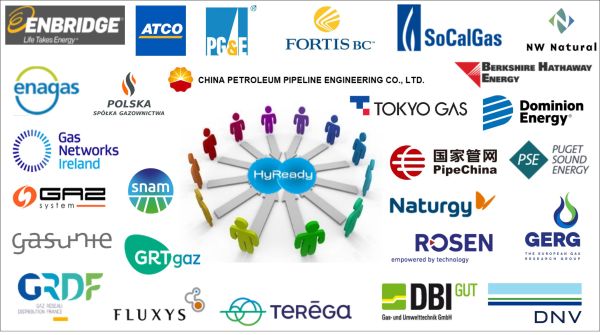HYREADY
The chemical and physical properties of hydrogen differ importantly from those of natural gas. Examples of the impact of hydrogen added to natural gas range from material degradation, performance and integrity of end user equipment to reductions in compressor efficiency and transmission capacity.
The program concerns all components in the natural gas system:
- The high pressure transmission network
- The medium pressure (regional) transmission grid
- Distribution grid, including PE, PVC and steel pipelines
- End user in-house infrastructure and appliances (domestic and industrial)
- Injection facilities
- Underground storage
- Deblending technologies
HYREADY distinguishes the impact of hydrogen on the gas system and feasible countermeasures on:
- Component level: to which extent are the component’s performance and characteristics affected by hydrogen?
- System level: to which extend is the functionality of the system affected by hydrogen addition? For example, the network capacity and caloric determination system for billing purposes.
- Location level: to which extend are the installation requirements, including safety zoning affected?
The HYREADY guidelines are based on existing knowledge in the literature, with the consortium partners and from component vendors.
Consortium
Currently the following members are partner in the HYREADY consortium:
The consortium welcomes new partners. For more information please contact us. Click here.



